Robin Page
@AlpinistNZ

A Japan domestic market exclusive from Citizen, the eloquently named NB1060 (it really rolls off the tongue, doesnt it?) has become a forum darling and absolute heavyweight in the sporty-dress watch category. With a balance of competent case finishing, great specs and an absolute powerhouse of a dial, it's a suprisingly versatile watch.
At the specs level, the high beat Miyota 9 series movement (Miyota is owned by Citizen so that makes it inhouse!) is a slim, reliable performer. The steel case features an elegant mix of brushing and polishing to give it some sparkle. I find the angular case design reminiscent of some Grand Seiko Sport models (the Evo9 series comes to mind) but at a much more accessible price. The overall shape is versatile, meaning in my collection it gets a lot more wear time than similarly positioned models such as Seiko's cocktail time series (the nearest direct big brand competitor). A 19mm lug width is annoying but visually balanced, so thankfully the included strap and deployant are pretty good. They do stick to a more sober aesthetic mind you, but swapping to a plain leather strap or even a sailcloth or textile strap really opens this watch up to casual wear.
The dial is where the money is at, however. Made of silver leaf dyed blue and coated in lacquer, it's a stunner. It shifts and sparkles from different angles, and is complemented by simple but well executed polished silver markers and a set of dual finished dauphine style hands. While each dial will be slightly different based on the patterning of silver leaf used, I've yet to see one that was a let down. The technique used here is becoming quite popular in some of the more dress oriented microbrands recently, but Citizen did it first!
I really like this watch. I purchased mine on a trip to Japan for my birthday, so I may be biased by the memories attached to my particular example, but I think for the asking price it's a genuinely gorgeous, well spec'd watch. I've heard some people call it "Grand Seiko on a budget" and I'm inclined to agree. I like mine so much I recently sold my similar sized Seiko Cocktail Time because, in the dress watch realm, I was just never reaching for it over my Citizen. Add that it can be dressed down and sporty with just a strap change? Winner.

With a long history of military issued dive watches, it's no surprise that the french Marine National turned to Tudor when designing a watch for their troops. What is a surprise is how focussed the resulting tool watch ended up being, with the Pelagos FXD showing what you get when you build for purpose rather than modifying an existing model to fit a marketting brief.
The basic formula for a tool diver is there: big, blocky hands and indices, a lack of a date complication to maximise lume area and legibility, and a fully graduated bezel for timing. But beyond that? This is a purpose built watch and while not for everyone, that just makes it cooler in my opinion. After handling this watch, I have some thoughts on what this approach means for us as collectors, so let's dive into that.
Let's take the bezel, for example. Unlike most dive watches, it uses a countdown bezel that rotates in both directions rather than a unidirectional upwards counting timer bezel. Why? Well, in the real world, divers don't use mechanical watches to time their dives, they use digital dive computers with built in depth sensors. They're much more precise and will automatically calculate decompression intervals instead of the diver having to use dive tables at the surface. So why bother carrying a mechanical dive watch at all then? When underwater with no visual references to rely on, divers navigate by using a compass and estimating how far they've swum by timing themselves; deep under water there's no GPS signal, using chronograph pushers for timing tends to encourage water ingress and destroy the watch, and swimming to the surface to look around is counter to the whole "using divers to covertly infiltrate enemy occupied space" thing. So, a countdown bezel is really useful for calculating waypoints and navigating underwater. Not as good for timing your eggs in the morning, but great for infiltrating enemy territory. Having tried my hand at under water dive navigation before, I can see the appeal. As I said, built for purpose.
Then we get to the case. The "FXD" in the name stands for "fixed," as in this case has fixed, solid lugs and doesnt use spring bars. If you're the type of person that won't buy a watch without a bracelet, you're out of luck with the FXD because it's pass thtough straps only here. Tudor does include 2 straps with purchase to soften the blow and lack of ability to use your extensive 2 piece strap collection, but some may not like this design feature. Why did they go down this route? Fixed lugs mean no spring bars to fail when the watch gets bashed about, increasing durability. Simple as that. It's a design decision anchored in increasing functionality. Personally, I think it looks awesome and helps the watch stand out in a sea of same same dive watches.
The case itself is titanium, chosen for light weight and corosion resistance. For a true tool watch, that makes complete sense. Another underrated feature of this watch is how close the dial sits to the crystal; it seems to reduce glare and shows off the tight tolerances Tudor are able to work with. It's something you dont see often but a feature I always appreciate.
No timer bezel, incompatible with your strap collection, no date complication, only available in black or blue... why would you buy one of these to daily? Because they're awesome, that's why. If we're truly honest with ourselves, most of our watch buying is more about cosplay than capability. Most of us don't take our chronographs to race at Le Man, or to time burns on our rocket ship to the moon. We don't actually dive with our dive watches. Our pilot watches will likely never see the inside of a cockpit. But they're cool little machines and we love the stories and design decisions that come with them. The Tudor Pelagos FXD has an awesome story that can be read through careful examination of its design, and for that reason alone I plan, funds permitting, to add one to the collection someday. Awesome watch.
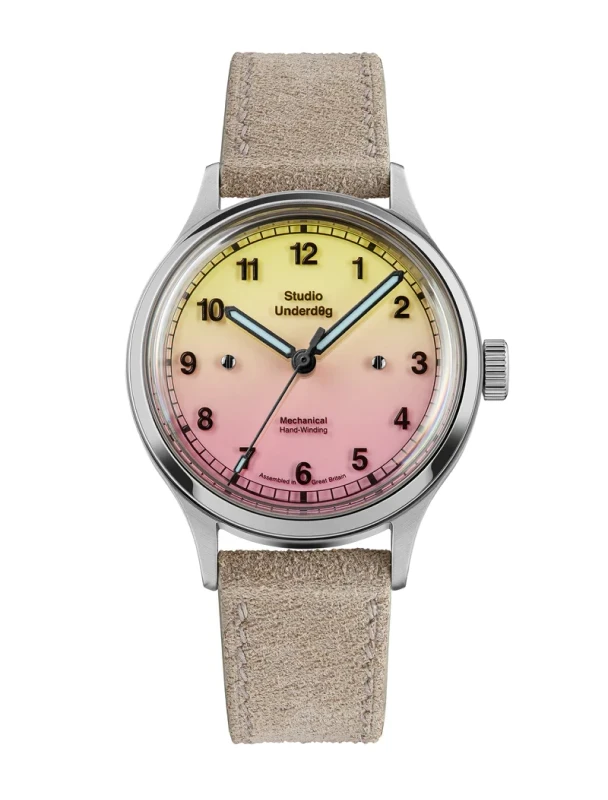
As the current horological hot property that they are, the sophomore release from Studio Underd0g had to do something interesting. To follow on from the brightly coloured series 1 chronographs, it couldn't be any old 3 hander to make the cut.
What we got was definitely innovative, with a series of full lumed dials with a disc of sapphire crystal sitting on top that features the indices and branding. This dial design is undeniably the calling card of this line of watches, and the main reason why you would consider buying this watch.
I spent a little bit of time handling the "Pink Lem0nade" variant, with its gradient yellow to pink dial that somehow still glows a single even hue once the lights go out. A domed crystal, hand wound Selitta movement and caseback engraving of a jellyfish complete the package.
This is a piece I seriously considered purchasing when it was first released, but ultimately decided against after spending some time handling it. This was primarily for 2 reasons, which I will discuss as follows.
The first is that I felt most of the money had been put into the dial, and fair enough! It is the main feature of this watch, after all... but for the asking price, I feel they could have done a bit more with the case finishing, and an easilly scratched fully polished bezel seems a bit at odds with something that pitches itself as a field watch.
The second point is that I found the 37mm size a little too compact for my personal tastes (38 to 39mm is my personal sweet spot for 3 handers). The 18mm lug pairing also limits strap swatch options while feeling a little too skinny for the watch; I personally feel a 19mm spacing would have worked better (I mean, if you're not going to choose the ubiquitous 20mm spacing you may as well go all out right?). But thats just, like, my opinion man, and Studio Underd0g certainly haven't had trouble selling these by the hundreds...
If you're after something a bit different that genuinely innovates and pushes forward what can be done with watch design, this might be the right watch for you! Just make sure you're happy with the smaller wearing dimensions and polished bezel and you'll have one heck of a conversation starter on your wrist!
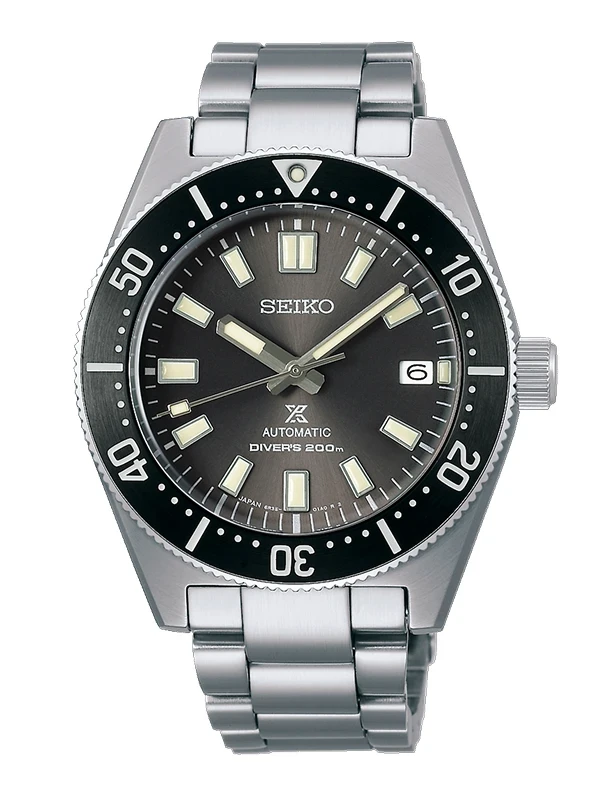
Built as a modern day successor to the original skin diver, the Seiko 62MAS, the SPB143 is a compact, slim, skin diver style watch with a silvery sunburst dial paired to a black bezel. The SPB143 is a dive watch that has grown on me with time, and I would argue it handles better than it photographs.
Specc'd satisfactorily (but not mind blowing) for the price, the SPB143 has a 70 hour power reserve, a pleasingly crisp and smooth 120 click bezel, and some nice polished highlights to compliment the predominantly brushed case. While the squared off interface between the case and bracelet isn't my favourite, it is faithful to the original watch it is based on and I think the more diehard enthusiasts would have rioted if Seiko had changed it. In a wave of recent retro re-issues, with this watch Seiko has some serious history and design cred to draw from and does a good job of preserving that in a modern format.
The main challenge Seiko faces with this watch is internal competition: compared to the more budget divers in Seiko's own line up, on paper the SPB143 offers a sapphire crystal and bump in power reserve compared to watches like the Turtle, Samurai or 5kx but asks for double or even triple the rrp in return. When handled in person the difference in build quality and finishing is more pronounced than you may think between the SPB143 and its more affordable stablemates, but in an increasingly digital marketplace where both entry level and premium options have the same name on the dial it can be hard to stand apart.
If you're considering the SPB143 I would recommend trying it on in person. On paper it feels underwhelming, but in person it makes a lot more sense. To give you an idea of how well this watch fills the vintage skin diver role, I cross shopped the SPB143 with a Tudor BB58 and while I ended up purchasing the Tudor, the fact the SPB143 was in the running at all for a third of the rrp of the Tudor should tell you all you need to know.

When Seiko's "cocktail time" range first launched, it was an absolute game changer for the affordable dress watch market. Where previously your options were either something like the Orient Bambino (a very classicly styled dress watch) or a number of uninspired quartz based homages to more expensive pieces, here you could find reliable in house mechanical movements and some seriously cool colours and dial textures. But, in the eyes of many collectors, the original cocktail time watches had a flaw: they were all 40mm+ in diameter, rather large for the dress watch category.
Thats where the Negroni and its siblings the "Mojito" and "Old Clock" come in. At 38.5mm across, they bring the cocktail time aesthetic in a more compact size. Like their larger brethren, they rock 4r35 movements with 3oclock date complications, domed hardlex crystals, and some absolutely killer dials. The Negroni utilises a fumé red guilloche-esque pattern that shifts and glitters deoending on lighting, and makes for a great example of the hard to find colour. This is paired with a black leather deployant clasp that works well with the overall design and is one of the more comfortable Seiko deployants I have tried.
When paired with a colour matched canvas strap, the Negroni is suprisingly versatile. I'd hesitate to call it a strap monster, but it can work outside of the suit and tie realm if you're willing to experiment a little.
The Negroni is a fun little watch to add to a rotation. If you're after something dressy but a little less stuffy than the usual fare, its worth a look!
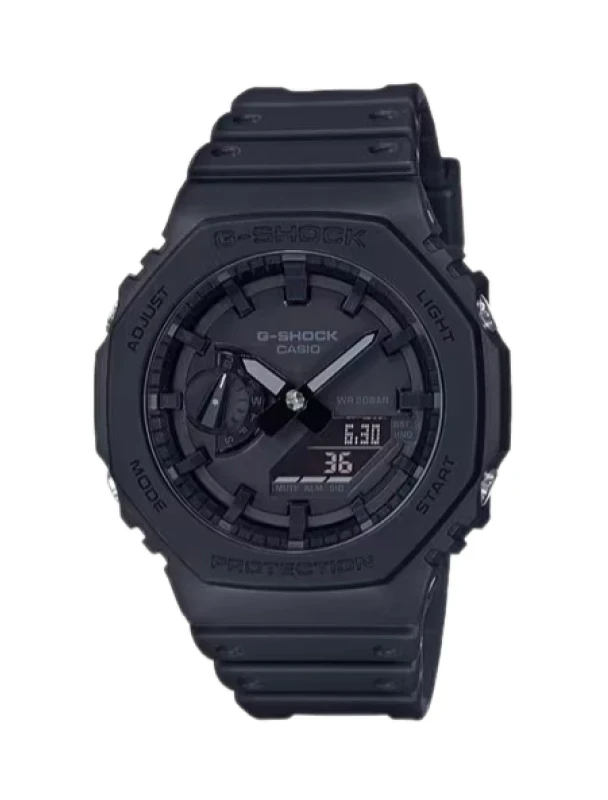
I have a long relationship with Casio watches. My first ever watch was a blue crystal Baby-G that I loved to death, until the strap failed while jumping off a wharf into the ocean and I could only watch as my beloved Baby-G slowly sank to the bottom of the pacific icean, never to be seen again. My next watch was a G-shock that I kept for many years until the band failed (after being hit with a cricket bat, to be fair) and unable to find a replacement band it got resigned to the back of the desk drawer.
When I got into watch collecting proper, I knew I just had to have a Casio in the collection as the designated "beater." It is through this lens I went shopping and through this lens I will be reviewing this watch. I settled on the G2100 "CasiOak," nicknamed after the octagonal bezel that more than closely resembles a certain high horology sport watch... The first casio in some time to reach hype watch status, the CasiOak is a sturdy but imperfect watch.
The pros: in this blacked out version, it looks menacing. Black goes with everything, and I've taken it to some pretty rough places without concern. Currently it is my watch of choice for white water kayaking, which involves regular close calls with rocks, some high pressure icy water, and generally getting bashed about. It handles all this with no trouble at all.
The cons: legibility. As many have said before me, the digital module on this design is small and hard to read, and is often covered up by the handset. So although the module features a stopwatch, world timer and alarm function, I don't find myself being inspired to use them. The lume on the analog hands is also a tokenism at best, fading faster than cheap vinyl left out in the summer sun. The black on black also isnt the best for analog legibility, but there are a million and one other colourways that address that particular concern.
If I was going to recommend a watch for the pure G shock experience to a first timer or for a one watch collection, I'm not sure I would dorect them to the GA2100. The 5600 series are a much better starting point, with better legibility from the digital screen and similar top notch wearability. But, if you're like me and just love the angular design, anidigi layout and are willing to accept some compromise in functionality in return, it lives up to the hype status.

Masters of the supply chain, British brand Christopher Ward deliver well priced "swiss made" pieces at competitive prices. The Dune C65 series is their take on the classic field watch, with vintage inspired styling tacked onto their so called "light catcher" case design.
All variants of the Dune feature a 38mm case that works well on a range of wrist sizes. Round indices and a simple but well finished handset keep the dial clean and legible, with healthy globs of lume and a nice boxy crystal. Steel variants feature a Selitta SW200 movement, while the bronze cased variants get the same movement but upgraded to a COSC chronometer certification. A mix of brushed and polished finishing gives a bit of "wow" factor. I'd also like to point out that the strap that came on my watch is one of the comfiest leather bands I've handled.
I purchased the so called "Aeolian" variant of the watch, with deep wave like ridges carved into the dial meant to evoke a sand dune or a stormy sea. This is a dial style that has become very popular in the last year or so, and having handled several different watches with it I have to declare Christopher Ward's version the best thanks to how deep and crisp the detailing is compared to the competition.
For Selitta powered watches with good finishing, the Dune line are well priced, handsome watches. I have heard of a few cases of watches arriving with the dreaded Selitta Spin from new, requiring returns under warranty, but thats not unique to Christopher Ward and is a known flaw of the SW200 movement. As a good all rounder type watch, they're well worth a look if the styling is to your taste!

Darling of the mircobrand world, Zelos specialise in some of the most daring dials on the market and leading the way in materials tech. The Aurora Ti 38mm is quintessential Zelos in this respect, making it well worth a look if you can get your hands on one during their infrequent drops or on the secondary market.
The angular, hardened titanium case gives the Aurora a unique feel in hand, being lighter than expected and a more muted sheen under the light than steel equivalents. A matching titanium H link style bracelet is a nice change from the typical Oyster style seen on watches in this category, while also increasing the range of motion of the bracelet contributing to comfort. An early adopter of on the fly adjustable clasps, Zelos have you covered on this front too. Unseen behind the etched caseback is an iron faraday cage, meaning this watch has stop spec antimagentism to boot!
But lets be honest, you buy a Zelos for the dial. This generation of Aurora start with your choice of funky materials, ranging from the crystalised titanium seen here, to a mother of pesrl Mozaic, hammered coloured metal, or even slices of meteorite. From here, large lumed applied indices sit at the 3, 6, 9 and 12 positions, mirroring the 4 main markers on a compass. Between them, sandwich dial style slots are cut into the dial surface and filled part way with lume, adding depth and visual interest. Sure, theres a lot going on, but that's why you buy a Zelos!
Auroras aren't easy to get your hands on, but as a result they hold their price well on the secondary market for lightly used examples. If you're after something fun and a bitndifferent for your collection, they're well worth your consideration... if you can find one!
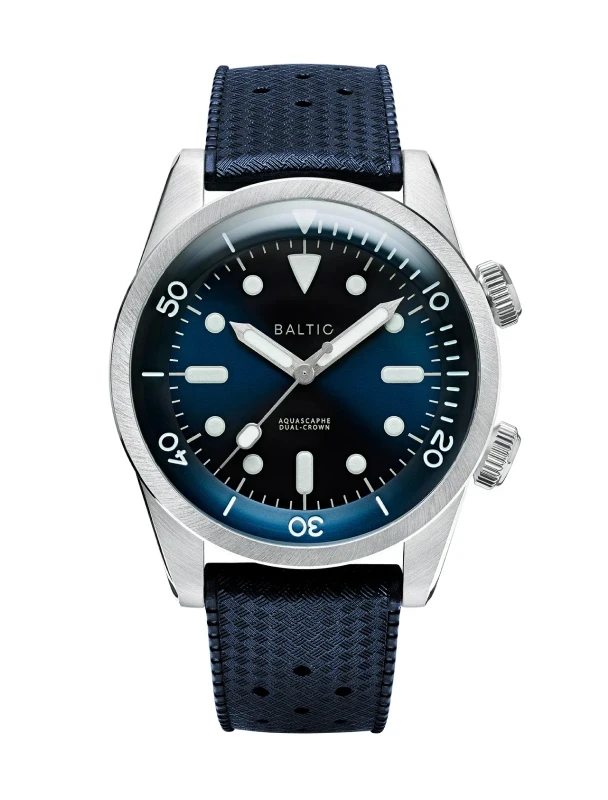
After escaped the hotly contested arena of fledgling "mircobrands" and breaking out into the big leagues, french based Baltic sometimes cop some flack for their divers feeling a bit... derivative. While nicely made, a lot of them looked very similar to pieces already on the market from other brands. I, for one, certainly thought this and when I started looking into adding a "super compressor" styled diver to my collection, I wrote off the Aquascaphe Dual Crown. That all changed after I handled one in person, and within a few minutes the credit card was out and I found myself at the end of my 6 month long journey hunting for my perfect dual crown diver. Let's find out why together.
The dial is a deep sunray blue, with printed indices and of course that inner rotating bezel. Baltic have resisted the urge to plaster the dial with text, keeping it pared back to just the name. The choice of font is legible and matches the overall aesthetic. Same goes for the printed indices; I was initially seeking something with applied indices instead, but in hindsight I think the combination of sunray dial, applied indices and internal bezel would have been a bit too much. This dial thrives on simplicity and legibility and I'm willing to admit I was wrong for writing off the Baltic for not having applied indices.
Same goes for the case. In photos on Baltics website, it looks very slab sided which may lead you to think it also wears as such. Thankfully this is not the case due to short lugs and a comfortable FKM strap. I find this watch very comfortable to wear, so much so it is currently my most worn watch this year! There are some nice touches in terms of finishing, such as helical brushing on the top of the case where it meets the curved, domed crystal and cross hatch pattern engraving on the crowns. The action of the crown controlling the bezel is incredibly smooth, more so than the one on the Seiko Alpinist, for instance, and feels very well made.
The watch feels very sturdy with tight tolerances. I've heard one reviewer say that the best made watches should feel like a single solid piece, like holding a smooth pebble in your hand. The Baltic passes this pebble test in my opinion, more so than most watches in my collection.
Thanks to excellent legibility, a focus on fine details and a comfortable wearing experience, I've found myself very happy as the proud owner of an Aquascaphe Dual Crown. It's a little on the pricier side compared to some of its competitors, with the rrp only including a rubber FKM strap. Baltic do offer a few different bracelets for this watch, but you have to purchase them as extras, which does sting a little when there are similarly specced watches out there that are both cheaper and include a bracelet as standard. However, I dont think many of them can match Baltic on build quality and given how uncommon dual crown divers are, that might just be the cost of entry in this case. I'll just let my photos of the watch do the talking instead.
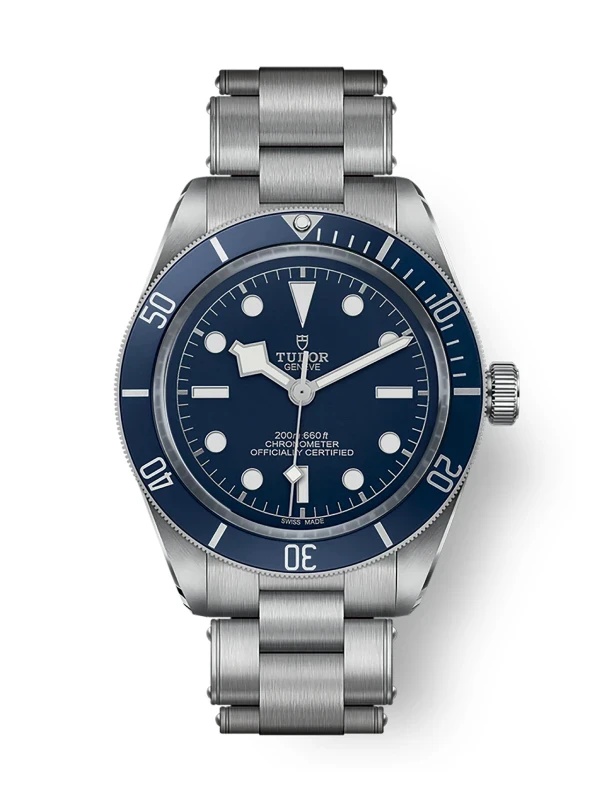
Arguably the first big success story of the compact-sized diver tsunami that has swept through the community over the past few years, the 39mm Black Bay 58 has earned its place as a crowd favourite amongst enthusiasts and casual buyers alike. Far from a poor mans Submariner, the BB58 is a deceptively simple but well thought out diver with some serious build quality and brand cred.
Take the dial, for instance. The hue of blue chosen is deep but dynamic, with good legibility as both a desk diver and a true-blue (heh) sports watch out in the water. The indice surrounds are polished and reflective, bringing just a little bit of bling and sparkle compared to the more utilitarian Tudor Pelagos line of watches. The snowflake hour hand has some detractors, but personally I love how blocky and legible it is, personally preferring this to the mercedes style hands used on the Rolex equivalent.
A beautifully clear, boxy sapphire crystal sits on top, which serves as a major contributer to the mid century vibes the BB58 is built to replicate. An underrated feature of this crystal is the distortion at the edges, which gives the dial more depth and character than would have been acheived with a flat crystal and unbevelled rehaut for instance. Also note the lack of metal between the bezel and the crystal; in most comeptitors you will find a small circle of steel where the crystal and bezel interface with the case. Not so with the BB58, making for a cleaner overall look. Sometimes it's not about what you can add to a design, but what you can remove.
Speaking of the bezel, at 60 unidirectional clicks rather than the now standard 120 clicks found on most of the competition, the BB58 does fall a bit behind in fidelity. However, those clicks are some of the best of any bezel at any price currently on the market, so I'm willing to forgive Tudor for this one. Seriously, this is such a nice bezel. I fidget with it a lot when it's on wrist becayse it's a tactile delight.
The bracelet is comfortable, not overly bulky, and has a nice taper. Online reviewers LOVE to moan about the faux rivets in the bracelet, but once on the wrist you have to reeeeeally look to notice them. An on the fly adjustment system is lacking in this generation of BB58, but the newer METAS certified variants hitting the market have the excellent T-fit system; hold out for one of those if thats a deal breaker or get your hands on a second hand 39mm tudor ranger bracelet (they apparently fit the BB58 case so are always an option).
I chose to buy a BB58 as a milestone watch for myself as it is one of the better options on the market for getting the most watch for your watch. It doesnt have any truly out there design choices, which some critics will insist makes it boring and vanilla. I've heard of several owners chosing to sell theirs on after a few years of ownership for exactly this reason. However, this safe design is exactly why I bought a BB58. It's got good enough specs to actually dive, swim, hike and explore with, it's not as flashy and gauche as the current generation of Submariners, and while I cycle my way through a number of different affordable pieces over the years I expect my BB58 to form the safe, bedrock of my collection that all newcomers are compared to. For that purpose? I cant think of many watches better suited than the BB58.
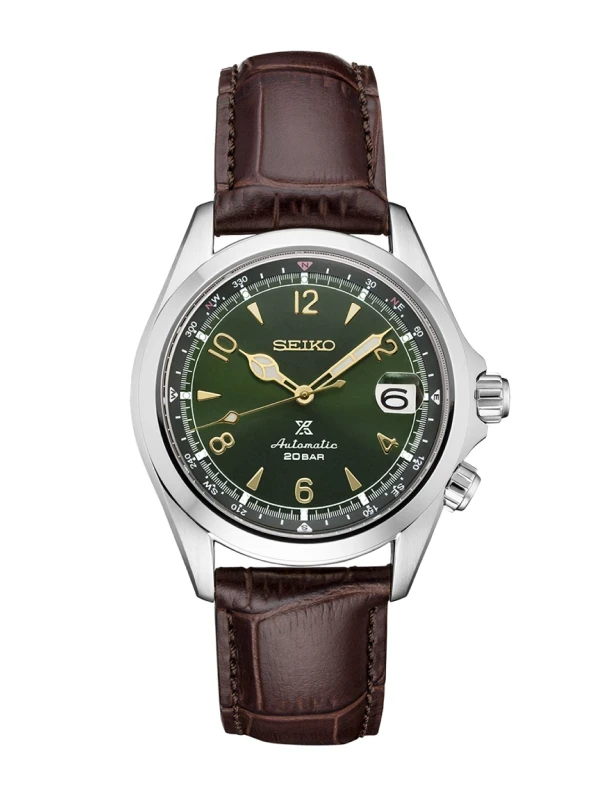
A cult favourite in its own right, the "Alpinist" line from Seiko has a long history of watches with fantastic technical specs matched with unconventional styling that is unapologetically its own. The current generation of Alpinists are not without their controversy, but to skip to the point they're an awesome, durable do it all watch and I love having mine in my collection.
Replacing the beloved SARB series alpinists, the SPB line had a lot to live up to as a value favourite. While the overall design remained much the same, a few controversial choices were made; namely the lack of a signed crown, changing from a black date wheel to a white one on this variant, and the addition of a Cyclops magnifier on the crystal. In return, the new generation gained a movement upgrade that boosted power reserve from 50-ish hours to 70, and unfortunately a price increase. The core design features of superior water resistance, radiant but deep green sunburst dial, elegant cathedral hands, and of course that compass bezel driven by a second crown remained largely unchanged between generations.
I purchased my Alpinist after a lot of scrutineering and sleepless nights. Did I go for the neo-vintage version, or cough up some extra cash for the newer version despite some objective downgrades between generations? In the end I settled on the newer variant, and I don't regret my decision. Upgrading to 70 hours of power reserve is an underrated feature in a multi watch collection, and soemthing I've begun to appreciate more and more. Not having to set the time and date every time you reach for a watch simply means you're more likely to choose it when deciding what to wear each day. Despite the controversy, I also like the Cyclops magnifier; the alpinist is already a quirky watch and as a design choice it fits right in. Besides, if you hate it thaaaat much it is possible to remove, much to the delight of the enthusiastic seiko modding community.
If I had to cut back to a one watch collection, the Alpinist would make the short list. It's a comfortable watch, with a good blend of rugged and dress characteristics that make it as ready for a day in the hills (like it was designed for!) as it is on the wrist at an upscale bar on a Friday night. Swap the overly stuffy and stiff stock deployant strap out for something a bit more versatile (the 20mm lug width makes this veeeery easy to do) and take it on some adventures. If I were offered the choice between my Alpinist and a Rolex Explorer, I'd take the Explorer, sell it, and go buy my alpinist back and take it on some adventures with the spare cash I just made from the sale: that's how much I love this quirky but capable watch.